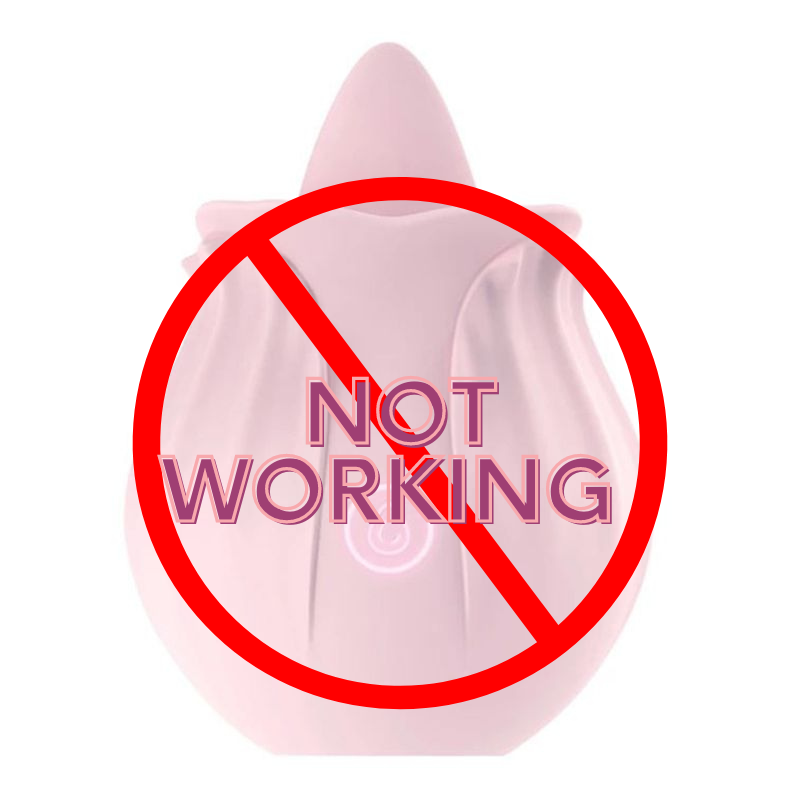Squirting is a controversial topic in the sexual wellness world. Some people believe that it is a real phenomenon, while others think it is just a myth. The controversy surrounding squirting often centers on the question of whether or not it is urine. In this article, we will explore the science behind squirting and answer the question of whether it is pee or not.
What is Squirting?
Squirting, also known as female ejaculation, is the release of fluid during sexual activity, often accompanied by orgasm. The fluid is believed to come from the Skene's glands, located near the G-spot. The Skene's glands are responsible for producing the fluid that is released during squirting.
The physiological process of squirting involves the Skene's glands filling with fluid, which is then released through the urethra during sexual activity. Squirting can feel different from person to person, with some people describing it as a powerful release of fluid, while others may not even notice it happening.
Is Squirting Urine?
The debate over whether squirting is urine or not has been going on for years. Some people believe that the fluid released during squirting is entirely composed of urine, while others argue that it is a unique fluid that is only similar to urine in some ways.
According to a study published in The Journal of Sexual Medicine, researchers collected samples of female ejaculate from seven women who reported producing ejaculate during orgasm. The samples were then analyzed for the presence of urea, creatinine, and prostatic-specific antigen (PSA), a protein found in the male prostate gland that is also present in female prostate tissue. The study found that all of the samples contained PSA and low levels of urea and creatinine, indicating that the fluid was not entirely composed of urine. The study concluded that female ejaculate is a distinct fluid that is chemically different from urine.
Another study published in the same journal examined the composition of female ejaculate from two women using ultrasound and biochemical analysis. The researchers found that the fluid originated from the Skene's glands, which are located near the urethra and are responsible for producing and releasing female ejaculate. The fluid was found to contain high levels of glucose, fructose, and prostatic acid phosphatase (PAP), which are not present in urine. The study concluded that female ejaculate is a distinct fluid that is chemically different from urine.
What Causes Squirting?
The exact cause of squirting is not fully understood, but there are several physiological and psychological factors that can contribute to its occurrence. Physiological factors such as the stimulation of the Skene's glands and the G-spot can increase the likelihood of squirting.
Psychological factors, such as relaxation and a sense of safety, can also play a role in squirting. When a person feels comfortable and relaxed during sexual activity, they may be more likely to experience squirting.
How to Tell if You're Squirting or Peeing?
It can be challenging to tell whether you're squirting or peeing, as the physical sensations can be similar. However, there are some clues that can help you determine what's happening.
One way to tell the difference between squirting and peeing is by the smell and color of the fluid. Squirting fluid is typically clear or slightly milky, with a sweet or slightly musky odor. Pee, on the other hand, usually has a stronger odor and a yellow color.
Another way to tell the difference between squirting and peeing is by the timing of the release. Squirting typically occurs during sexual activity and is often associated with orgasm. Peeing, on the other hand, can happen at any time and is not typically associated with sexual activity.
The difference between Squirting and Peeing
Squirting is the release of fluid from the Skene's glands, located near the G-spot, during sexual arousal or stimulation. On the other hand, peeing is the process of emptying the bladder of urine.
The fluid released during squirting is believed to come from the Skene's glands, which are located around the urethra and are responsible for producing and secreting fluid that helps lubricate the vagina during sexual activity. The fluid can vary in consistency, texture, and color, and may contain small amounts of urine, but it is not entirely composed of urine. In contrast, urine is a waste product that is produced by the kidneys and stored in the bladder until it is expelled from the body.
While both squirting and peeing involve the release of fluid from the urethra, they are different in several ways. The fluid released during squirting is usually odorless and colorless, whereas urine typically has a strong odor and yellow color. Additionally, the release of fluid during squirting is often accompanied by intense feelings of pleasure, whereas urination is a necessary bodily function that is not associated with sexual arousal or pleasure.
It's also important to note that the sensation of squirting can be different from the sensation of urination. Squirting is often described as a pleasurable and intense release of pressure, whereas urination can be uncomfortable or even painful if the bladder is too full.
Where does squirt come from?
Squirt is a fluid that is released from the body during sexual activity. The fluid is believed to come from the Skene's glands, also known as the female prostate gland. These glands are located near the G-spot, which is a sensitive area inside the vagina that can produce intense sexual pleasure when stimulated. The Skene's glands are responsible for producing fluid that lubricates the vagina and helps with sexual arousal. When a woman becomes sexually aroused, the Skene's glands can fill with fluid, which is then released during sexual activity.
What happens when a woman squirts?
When a woman squirts, a clear or slightly milky fluid is expelled from the body. This fluid is released through the urethra, which is the same tube that urine passes through. However, it is important to note that squirting is not the same as urination. The fluid released during squirting may contain some urine, but it is not entirely composed of urine. The amount of fluid released during squirting can vary from a few drops to several ounces, and the sensation can feel different from person to person.
Is squirting an orgasm?
Squirting is often associated with orgasm, but it is not always accompanied by an orgasm. Some women may squirt during sexual activity without experiencing an orgasm, while others may experience both squirting and orgasm simultaneously. Squirting can be a pleasurable and intense experience for some women, and it is a normal bodily function that should not be stigmatized or shamed. However, it is important to note that not all women are able to squirt, and the ability to squirt does not determine one's sexual satisfaction or pleasure.
Benefits and Risks of Squirting
Benefits:
Increased sexual pleasure and satisfaction
Increased intimacy with partner
Possible release of pent-up emotions
Positive effects on mental health, such as decreased anxiety
Risks:
Risk of bladder infections or other urinary tract issues
Potential embarrassment or shame if partner does not understand or is uncomfortable with squirting
Discomfort or pain during sex due to pressure on bladder or urethra
How to Experience Squirting?
For those who are interested in experiencing squirting, there are several techniques that may increase the likelihood of it happening. These include:
- Focusing on the G-spot: The G-spot is an area on the front vaginal wall that is highly sensitive for many people. Stimulating this area during sexual activity may increase the likelihood of squirting. Rosekis newly released Rose Vibrator is your Squirting helper
- Relaxation and breathing techniques: Many people report that squirting is more likely to occur when they are deeply relaxed and focused on their breath. This can help release tension in the pelvic area and increase blood flow to the genitals.
- Experimenting with different positions: Some positions may make it easier to stimulate the G-spot or put pressure on the bladder, which may increase the likelihood of squirting. Experimenting with different positions can help you find what works best for you.
- Communication with partners: Communicating with your partner about what feels good and what you're comfortable with can help increase the likelihood of squirting. It's important to feel safe and comfortable with your partner before exploring squirting.
FAQs
1. Is squirting real?
Yes, squirting is a real phenomenon experienced by some people during sexual activity. It is the release of fluid from the Skene's glands, which are located near the G-spot.
2. What does squirting feel like?
Squirting can feel different from person to person, but it is often described as a release of intense pleasure and pressure in the pelvic area. Some people may also experience a sense of euphoria or emotional release.
3. What can I do to make myself squirt?
There are several techniques that may increase the likelihood of squirting, including stimulating the G-spot, using sex toys, and relaxing the pelvic muscles. Communication with a partner and exploring one's own body can also be helpful.
4. Is squirting normal?
Yes, squirting is a normal bodily function and nothing to be ashamed of. However, not everyone is able to do it, and it is not a measure of sexual prowess or pleasure.
5. Should I be worried about squirting?
Squirting is generally not a cause for concern, but there may be some risks associated with it. These include bladder issues, such as incontinence or urinary tract infections, if proper hygiene is not maintained. It is important to communicate with a healthcare provider if any concerning symptoms arise.
6. How does squirting happen?
Squirting occurs when the Skene's glands release fluid, which may be caused by increased pressure or stimulation of the G-spot. The fluid may be a combination of urine and other fluids produced by the glands.
7. Can everyone squirt?
Not everyone is able to squirt, as it depends on individual anatomy and physiological processes. However, some people may be able to learn techniques to increase the likelihood of squirting.
8. Is squirting always accompanied by an orgasm?
Squirting is not always accompanied by an orgasm, but it is often associated with intense sexual pleasure and arousal.
9. What does squirting feel like?
As mentioned earlier, squirting can feel different from person to person. Some people describe it as a release of pressure or tension in the pelvic area, while others may experience a sense of euphoria or emotional release. It can also be accompanied by intense sexual pleasure and arousal.
Conclusion
In conclusion, squirting is a natural bodily function that is a source of controversy and debate. While there is still much we don't know about squirting, scientific studies have shed some light on the subject. Squirting is not always accompanied by an orgasm and can feel different from person to person. It's important to listen to your body and be mindful of any discomfort or pain during sexual activity. If you're interested in experiencing squirting, there are several techniques that may increase the likelihood of it happening. Ultimately, understanding and exploring your own body can lead to a greater sense of empowerment and satisfaction in your sexual experiences.


